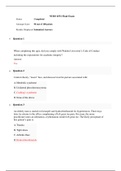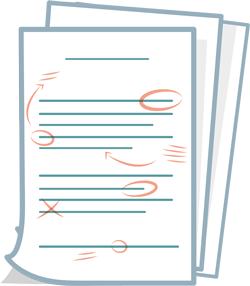Examen
NURS 6531 Final Exam (2 Versions, 200 Q & A ) / NURS6531N Final Exam (Year-2019/2020, Verified and 100% Correct Answers)
- Cours
- Établissement
NURS 6531 Final Exam / NURS6531 Final Exam (Latest): Walden University Walden NURS 6531 Final Exam / Walden NURS6531 Final Exam (Latest) • Question 1 When completing this quiz, did you comply with Walden University’s Code of Conduct including the expectations for academic integrity? ...
[Montrer plus]



